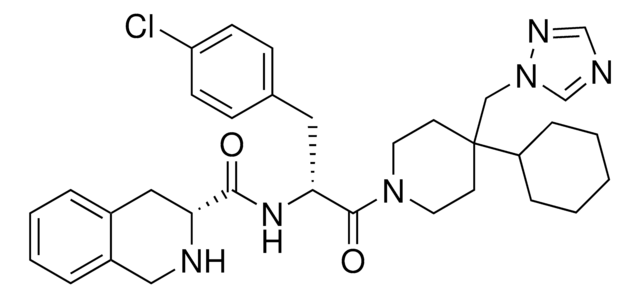SML0712
1-Methyl-1,2,3,4-tetrahydroisoquinoline
≥97% (GC)
Synonym(s):
1,2,3,4-Tetrahydro-1-methylisoquinoline, 1MeTIQ
About This Item
Recommended Products
Assay
≥97% (GC)
form
oil
color
, colorless to light yellow to light pink
storage temp.
2-8°C
InChI
1S/C10H13N/c1-8-10-5-3-2-4-9(10)6-7-11-8/h2-5,8,11H,6-7H2,1H3
InChI key
QPILYVQSKNWRDD-UHFFFAOYSA-N
Biochem/physiol Actions
Features and Benefits
Signal Word
Warning
Hazard Statements
Precautionary Statements
Hazard Classifications
Acute Tox. 4 Oral - Eye Irrit. 2 - Skin Irrit. 2 - STOT SE 3
Target Organs
Respiratory system
Storage Class Code
13 - Non Combustible Solids
WGK
WGK 3
Flash Point(F)
Not applicable
Flash Point(C)
Not applicable
Certificates of Analysis (COA)
Search for Certificates of Analysis (COA) by entering the products Lot/Batch Number. Lot and Batch Numbers can be found on a product’s label following the words ‘Lot’ or ‘Batch’.
Already Own This Product?
Find documentation for the products that you have recently purchased in the Document Library.
Articles
Our company offers many products related to histamine synthesis and metabolism for your research needs.
Our team of scientists has experience in all areas of research including Life Science, Material Science, Chemical Synthesis, Chromatography, Analytical and many others.
Contact Technical Service



![Octahydrocyclopenta[c]pyrrole AldrichCPR](/deepweb/assets/sigmaaldrich/product/structures/385/398/e59a3455-5fde-4e4a-a173-43297760be22/640/e59a3455-5fde-4e4a-a173-43297760be22.png)




